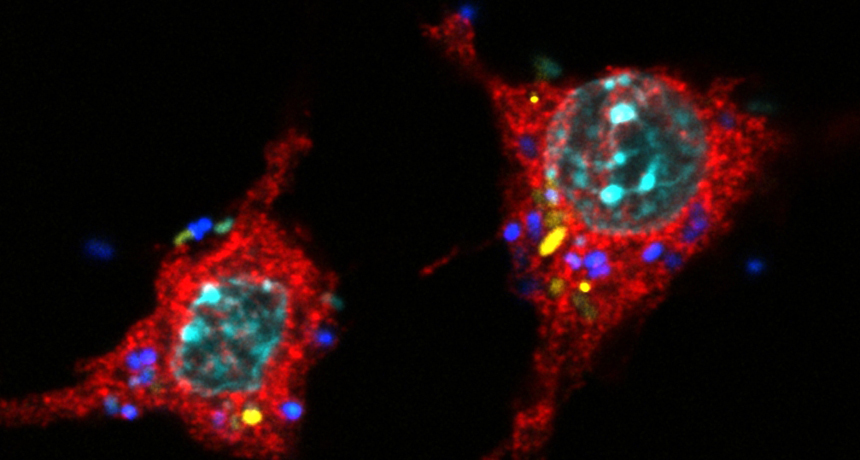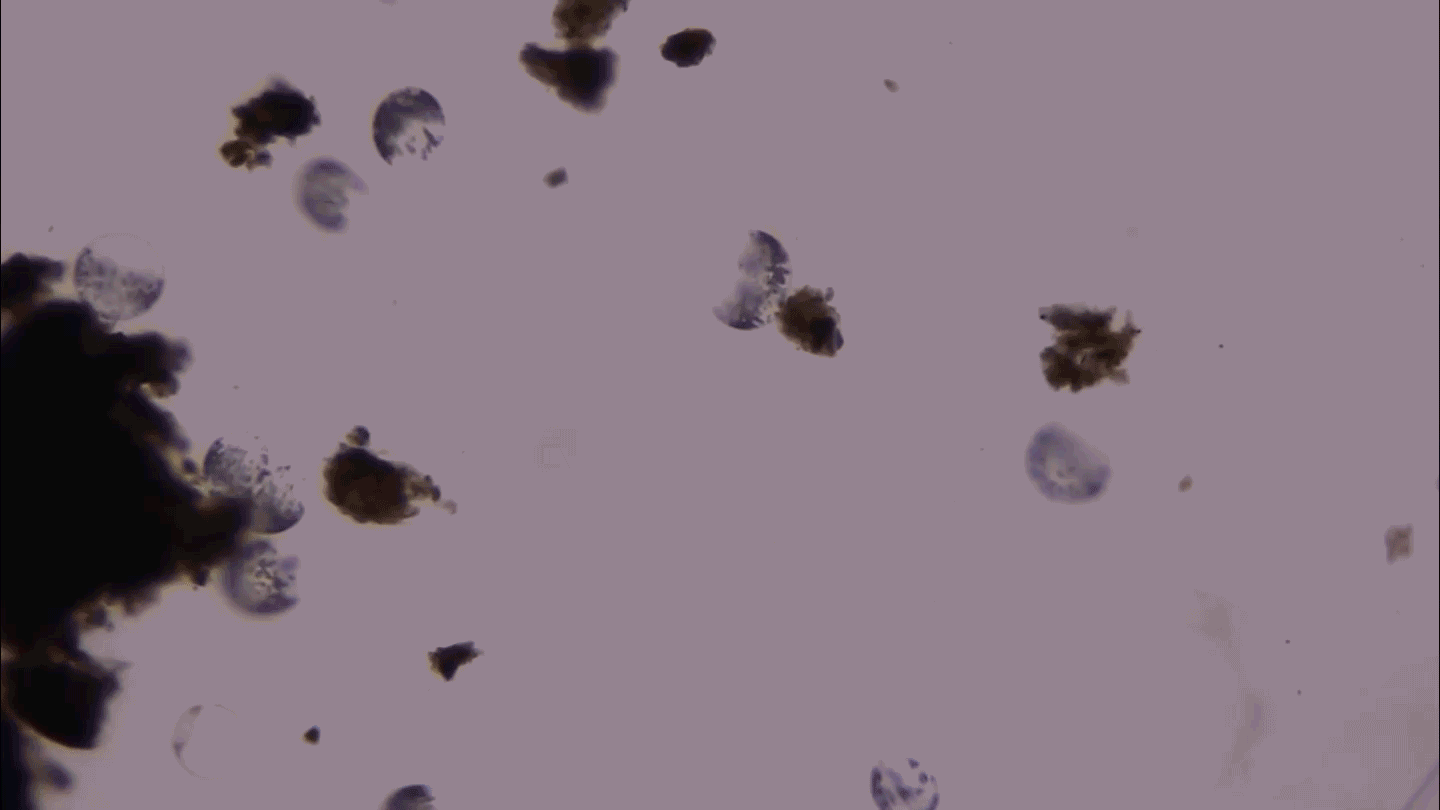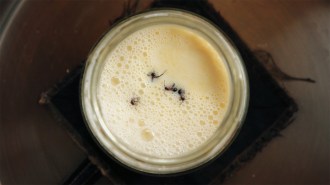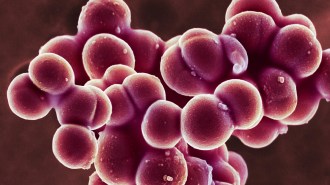Bacteria turn threatening in tests with immune cells

When benign E. coli (yellow or blue) repeatedly face the immune cells called macrophages (red), the bacteria can develop genetic mutations to transform into life-threatening pathogens.
Gordo lab/Instituto Gulbenkian de Ciência







